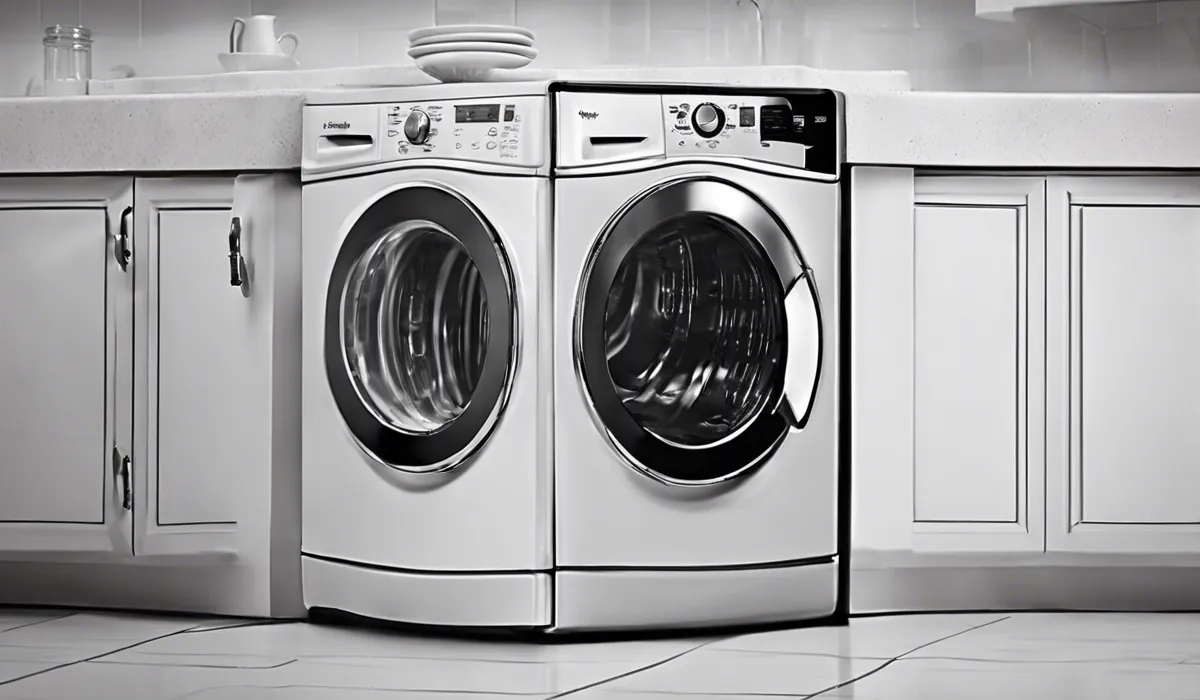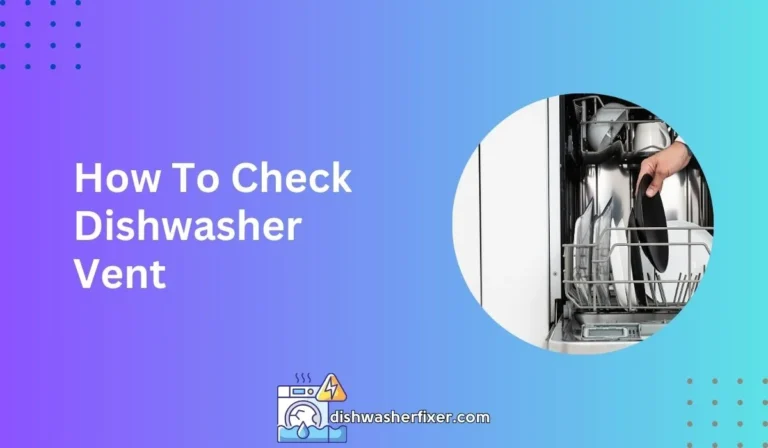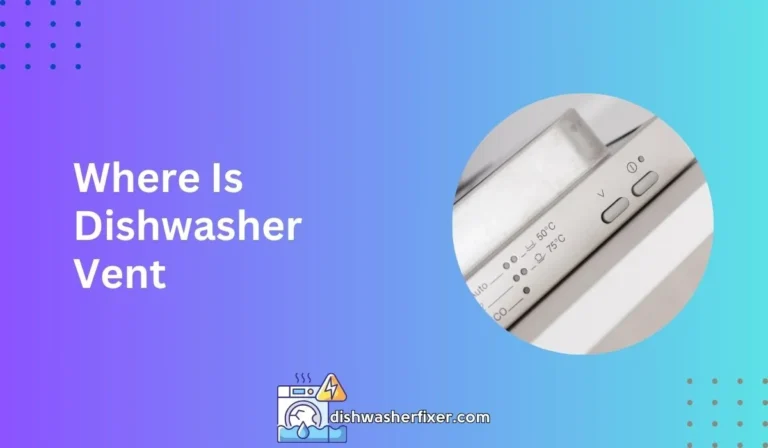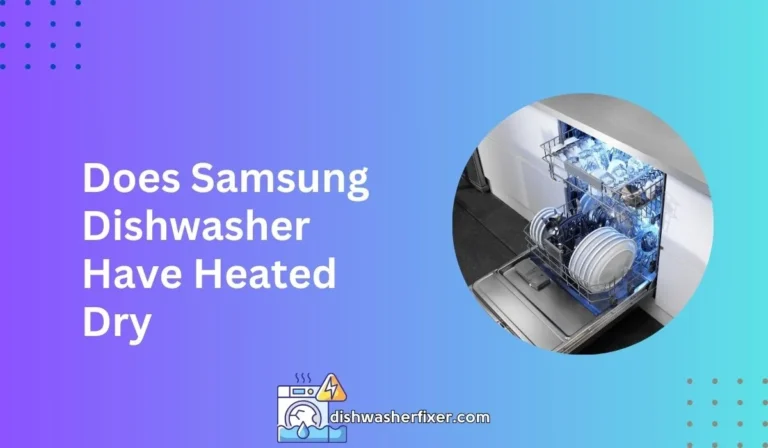How to Drain Dishwasher Whirlpool: Quick & Easy Fixes!
To drain a Whirlpool dishwasher, first, turn off the power. Remove the bottom rack and detach the drain filter. Clear any clogs. Place a pan or towels to catch water. Reassemble and run a rinse cycle to check if it drains properly.
Step-by-Step Guide to Manually Draining Your Whirlpool Dishwasher

Turn Off and Unplug the Dishwasher
Before you begin any maintenance on your dishwasher, safety comes first. Make sure to turn off the power to your dishwasher at the circuit breaker.
Then, unplug the appliance from the wall to ensure there is no electrical current that could cause harm.
Remove Standing Water with a Cup or Sponge
If there’s water pooled at the bottom of your dishwasher, you’ll need to remove it. Use a cup to scoop out as much water as you can, and then soak up the remainder with a sponge or towels. Keep a bucket handy to dump the water into as you work.
Clean the Filters and Check for Clogs
After the water is removed, locate and detach the dishwasher’s filter, typically found at the bottom of the dishwasher.
Rinse it under running water and gently scrub it with a soft brush to remove any debris. Check the area where the filter sits as well as the drain for clogs and remove any obstructions you find.
Use a Plunger on the Drain
If you suspect a clog deeper in the drain, you can use a plunger to try and dislodge it. Make sure to create a good seal over the drain opening and plunge vigorously but carefully to avoid splashing dirty water.
Disconnect and Drain the Dishwasher Hose
Locate the dishwasher hose at the back or bottom of the machine. You may need to remove a kickplate or panel to access it.
Once you find the hose, disconnect it carefully and be prepared for water to spill out. Drain the water into a pan or bucket.
Tilt the Dishwasher to Remove Remaining Water
After clearing the hose, tilt your Whirlpool dishwasher forward carefully to let any trapped water flow out from underneath the appliance. Be sure to have towels or a mop ready in case there is more water than expected.
Troubleshooting Common Issues Preventing Drainage

Check for and Remove Any Food Debris or Foreign Objects
One of the most common causes of drainage problems is food debris or foreign objects blocking the path. Inspect the drain area and remove any visible obstacles. A flashlight can help you spot hard-to-see items.
Inspect the Drain Valve for Obstructions or Malfunction
The drain valve can sometimes get stuck or obstructed, preventing water from leaving the dishwasher. Check if the valve is moving freely; if not, it may need to be cleaned or replaced.
Test the Dishwasher’s Motor and Pump Assembly
The motor and pump assembly are crucial for draining. If they’re not functioning correctly, your dishwasher won’t drain.
Listen for any unusual noises that could indicate a problem and consider consulting a professional if you suspect motor or pump issues.
Verify the Functionality of the High Loop or Air Gap
Some dishwashers use a high loop or an air gap to prevent sink water from flowing back into the dishwasher. Ensure that the high loop is properly arranged or the air gap is clear of debris for optimal function.
Preventative Maintenance to Keep Your Whirlpool Dishwasher Draining Properly

Regular Cleaning of the Filter and Drain Area
Periodically remove and clean your dishwasher’s filter according to the manufacturer’s instructions. Keeping the filter and drain area clean can prevent future blockages and drainage issues.
Routine Checks for Hose Kinks or Blockages
Inspect the dishwasher hose regularly for any kinks that might impede water flow. Also, check for blockages within the hose and clear them to maintain proper drainage.
Proper Loading Techniques to Prevent Future Clogs
Load your dishwasher correctly to ensure that water can circulate freely during cycles. Avoid overloading and place items so that they do not block the spray arms or the drain.
Periodic Use of a Dishwasher Cleaner to Clear Out Buildup
Using a dishwasher cleaner every few months can help break down detergent and food residue buildup within the appliance. This preventive measure keeps your dishwasher clean and helps maintain efficient drainage.
FAQs About Draining a Whirlpool Dishwasher
How do I turn off the power to my Whirlpool dishwasher before draining?
You can turn off the power by unplugging the dishwasher from the wall outlet or by switching off the circuit breaker that controls the dishwasher.
What are the steps to remove the drain filter in a Whirlpool dishwasher?
Remove the bottom rack to access the drain filter, then twist and lift the filter out to detach it from the dishwasher.
How can I clear clogs from my Whirlpool dishwasher drain?
After removing the drain filter, inspect for debris and remove any clogs with a straightened wire hanger or a similar tool, then rinse the filter before reassembling.
What should I do to catch water when draining my Whirlpool dishwasher?
Place a pan or absorbent towels under the dishwasher’s drain area to catch any water that may spill out during the draining process.
How do I verify if my Whirlpool dishwasher drains properly after maintenance?
After reassembling the dishwasher, restore power and run a rinse cycle to ensure that the dishwasher is draining properly without any leaks.
Final Thoughts
Draining a Whirlpool dishwasher involves turning off the power, removing the bottom rack, and detaching the drain filter to clear any blockages. Catch any spillage with a pan or towels during the process.
After reassembling, confirm the dishwasher drains correctly by running a rinse cycle. Proper maintenance ensures efficient performance and longevity of your appliance.




